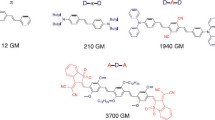
Access this book
Tax calculation will be finalised at checkout
Other ways to access
About this book
Similar content being viewed by others
Keywords
Table of contents (41 chapters)
-
Front Matter
-
Theory of Optical Hyperpolarizability in Organic Molecules
-
Organic Molecules for Second Order Nonlinear Optical Effects
-
Third Order Effects in Thin Films and in Solutions
Editors and Affiliations
Bibliographic Information
Book Title: Organic Molecules for Nonlinear Optics and Photonics
Editors: J. Messier, F. Kajzar, P. Prasad
Series Title: NATO Science Series E:
DOI: https://doi.org/10.1007/978-94-011-3370-8
Publisher: Springer Dordrecht
-
eBook Packages: Springer Book Archive
Copyright Information: Springer Science+Business Media Dordrecht 1991
Hardcover ISBN: 978-0-7923-1181-2Published: 31 March 1991
Softcover ISBN: 978-94-010-5490-4Published: 13 October 2012
eBook ISBN: 978-94-011-3370-8Published: 06 December 2012
Series ISSN: 0168-132X
Edition Number: 1
Number of Pages: XIV, 544
Topics: Classical Electrodynamics, Optics, Lasers, Photonics, Optical Devices, Industrial Chemistry/Chemical Engineering, Physical Chemistry



